 |
| pouring bucket after bucket of fish guts onto the compost pile; not for the faint of heart. |
 |
| Columbine harvest this spring.Many stems reached 4ft. |
This season after failing to get our compost piles hot enough we started experimenting with different types of nitrogen.
Horse manure, while readily available, just didn’t give us enough heat. Neither did our chicken coop bedding, grass clipping or garden scraps.
 |
| spreading fish guts is totally gross but it sure does make you feel like a bad ass. |
Finally after a dozen unsuccessful tries I found a processing plant that would hear me out. While it did take a bit of explaining, the manager finally agreed. The looks on the employees faces when we pulled away was priceless! You could tell they were totally mystified.
 |
| Chris flinging fish guts, heads and tails onto the pile |
Once we had a direct line on a strong nitrogen source we then started scouting the neighborhood for additional ingredients. While our farm produces quite a bit of bulk it wasn’t nearly enough to satisfy this new en devour. In order to balance out multiple tons of fish sludge we needed to quadruple or even quintuple our stock.
Two massive piles of horse manure, a truck load of leaves, 15 bales of rotten hay and 11 heaping truck loads of weeds later we were in business.
Layering (over and over) fresh green stems/stalks/leaves with lots of dry brown material and then a thick layer of fish we made a 75 ft. long windrow of yumminess.
BE SURE TO SPREAD THE FISH IMMEDIATELY,EVEN IF IT’S AFTER DARK! THE LONGER YOU WAIT, THE MORE STRONG IT SMELLS!
 |
| ‘Winter Sunshine’ Sweet Peas from the greenhouse. |
 |
| June sweet pea harvest. |
We expected that on the first few turns it would be an absolutely disgusting experience, with hunks of rotting fish, maggots and lots of smell.
Ok, this is the craziest part. After just 3 days of cooking, we couldn’t find a trace of the fish anywhere. Entire heads, spines, tails….gone, completely vanished.
 |
| Chris turning the pile after work |
So, there you have it. Reincarnation at its finest and the truth behind the beauty here at Floret .
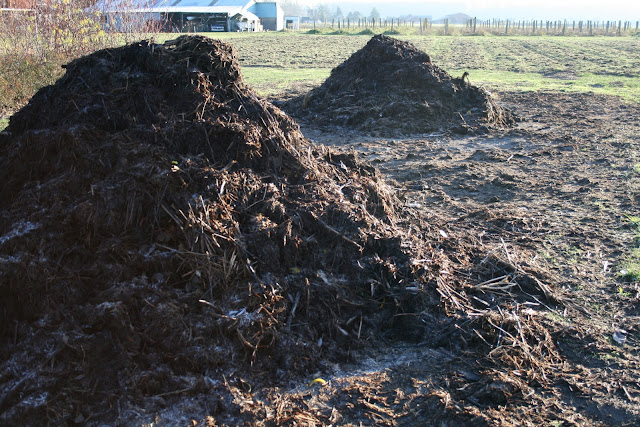 |
| the pile as of this week.slowly simmering and waiting for spring when it will reincarnate into an abundance of flowers :) |

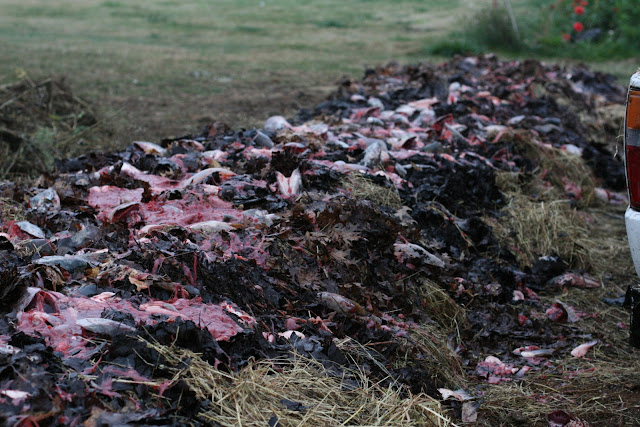

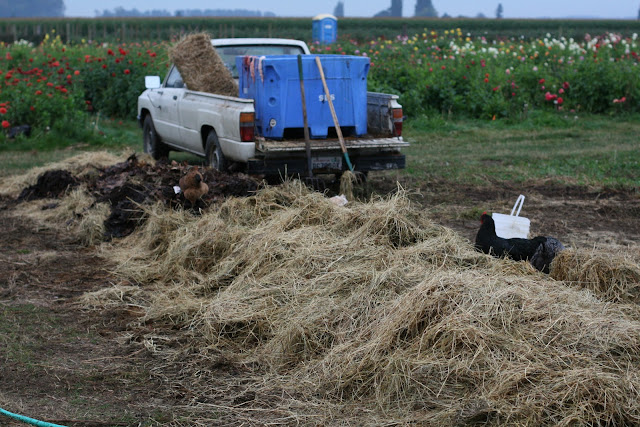


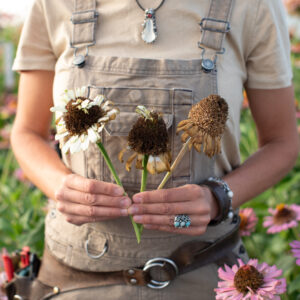
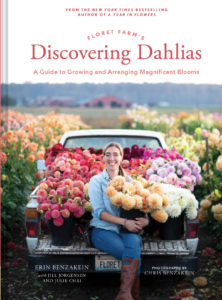
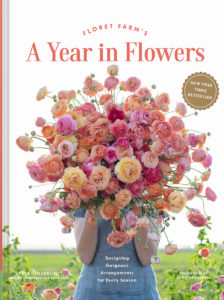
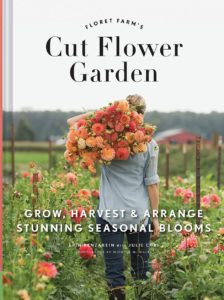

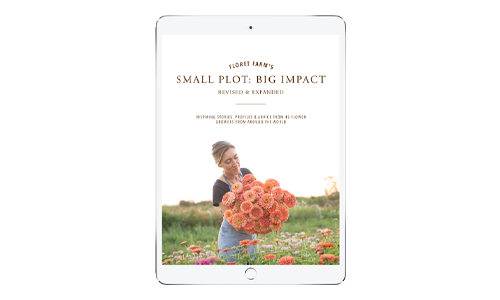
Melanie on
Thank you so much for sharing this. Live in Eastern NC and found a source for twice a week pick up of fish guts on my first ask!! Have received the course materials and very excited to be starting your Floret Online Workshop next month!